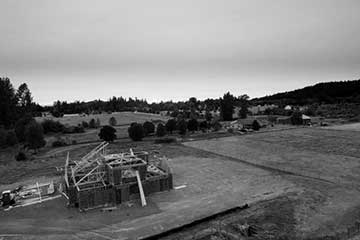A Guide to Owning a Listed Building
If you are considering purchasing a listed building, or you may already own one is important to understand any obligations and responsibilities that come with owning a listed building. This guide was created for owners to understand any issues they may face from the legal, financial, and operational aspects of ownership.
The “listing” term refers to a building that is part of the statutory list of buildings of special architectural or historic interest. It recognises that a building is special in a national context; therefore any alteration, extension and demolition will require consent from the appropriate bodies.
A listed building is protected as a whole, internally and externally, any structures which are either attached to the building or fall within its curtilage (an area of land attached to a house and forming one enclosure with it). Sometimes includes garden walls and outbuildings.
To note that a statuary list includes the address of the property, the date first listed, the grade of the listing, a brief description of the property and a map reference. Recently, a listing includes a more detailed description of the building‘s significance and a more accurate map that defines the extent of the listing.
When comes to getting a building listed, some qualities are chosen and the most important is its age – the older the building more likely will be a Listed Building.
Anything before 1700 which have survived in anything like their original condition is listed. Between 1700 and 1840, most buildings are listed – some selectivity has been applied. Buildings erected between 1840 and 1914 are selected on the basis of their demonstrating technological advances, being the work of a particular architect, or having some notable features.
Grade I – Buildings of exceptional interest; 2.5% of listed buildings are Grade I.
Grade II* – Buildings of particular importance, being of more than special interest; 5.5% of listed buildings are Grade II*.
Grade II – Building of special architectural or historic interest; 92% of listed buildings are Grade II. In England are approx. 376,000 listed building entries.
In Scotland, the grading is split into categories A, B, and C.
Cat. A – Buildings of national or international importance, either architectural or historic, or fine little-altered examples of some particular period, style or building type.
Cat. B – Buildings of regional or more than local importance, or major examples of some particular period, style or building type which may have been altered.
Cat. C – Buildings of local importance, lesser examples of any periods, style or building type, as originally constructed or altered; and simple, traditional buildings that group well with others in categories A and B or are part of a planned group such as an estate or an industrial complex.
Northern Ireland uses a similar system to Scotland with grades A, B+, B1 and B2.
As mentioned before, a Grade 2 listing is the most common listing type. Here are some notable examples of Grade II Listed Buildings:
Alexandra Palace is an iconic London entertainment venue dating back to Victorian times. It was opened in 1873.
The Whitechapel Bell Foundry is Britain’s oldest manufacturing company established in 1570 and some of most famous bells were cast in the Whitechapel Foundry.
Need A Free Estimate?
- Fully qualified RICS professional surveyor
- Affordable, fast and thorough surveys
- Clear, precise and easy to understand report
DO
- Carry out periodic inspections and maintenance
- Search for professional advice from a reputable, chartered professional
- Always obtain consent when it is required
- “Repair than replace” approach is the most suitable
- Understand the cause of defects before carrying out reparis
- Retain historic fabric and finished where possible (use only breathable materials)
- Use only tried and tested materials and techniques for any repairs or improvements
DON’T
- Ignore structural or damp issues
- Rely on salesman or trader only knowledge. Ask for independent advice – from a specialist in historic buildings
- Alter original features of the building or make modifications without getting consent
- Use cement, uPVC, insulation foam, or other incomparable modern building materials
The Conservation Officer
The conservation officer is the most important point of contact as he will grant or refuse consent to make any changes to your home. They may offer guidance on what materials and techniques should be used to make any alterations to your listed building. These controls are referred to as “Listed Building Consent.”
Is similar to Planning Permission with the difference that no fees are to be paid and also the enforcement is not limited by time. Any work needs to have been granted.
Unauthorised Repairs or Work
Having an extension built or carrying out any alterations to a listed building without consent is considered a criminal offense. It does not matter who did the work, or how long ago, it is the current owner’s responsibility to have a Listed Building Consent for any work carried out.
Therefore, is vital to ensure that any alterations have been granted before you purchase a listed building.
If you go ahead with the purchase you may be liable to reverse any additions or alterations that do not have Listed Building Consent or comply with the conditions of consent.
Damp
The most common issue encountered in historic buildings is dampness. It is important to understand how historic buildings were constructed and to check for obvious causes before carrying out any remedial work.
We highly recommend seeking a specialist professional when comes to damp in historic buildings. However, in the majority of “perceived damp” cases, the introduction of cement or other non-breathable materials was the cause of the high presence of moisture within building walls.
Most older buildings are built of solid walls and lime mortar which allows moisture to evaporate. If the walls are rendered with cement or non-breathable materials (most modern materials) the cycle of evaporation is broken.
Not only once, we saw recommendations for artificial materials to be injected within the brickwork in an attempt to “cure” the dampness. Generally is an unnecessary expense and the removal of inappropriate cement or Gypsum plaster is all that is needed to encourage the building to “breath again.” (Please seek advice from a chartered surveyor or a specialist before carrying out any remedial work)
Buying any property is a daunting process but owning a listed building can bring some extra stress due to the particular issues you need to look out for when buying this type of property.
From our experience using the right solicitor and getting an independent assessment from a surveyor with experience in listed buildings can save you time and a lot of money.
We highly recommend being particularly cautious about any unauthorised alterations which have been carried out by previous owners and always get well informed to ensure you have made an informed decision. Ask your solicitor and surveyor to explain in detail any possible areas of concern.
We hope that our “Owning a Listed Building” guide will help you understand where and how you can prevent yourself from a headache and wasting your time and money when comes to listed buildings. And if you are not sure about building regulations or Listed Building Consent requirements, always ask for professional help.
Written by Danil P.
19th Jun 2021 (Last updated on 20th Jun 2022)
5 minute read





